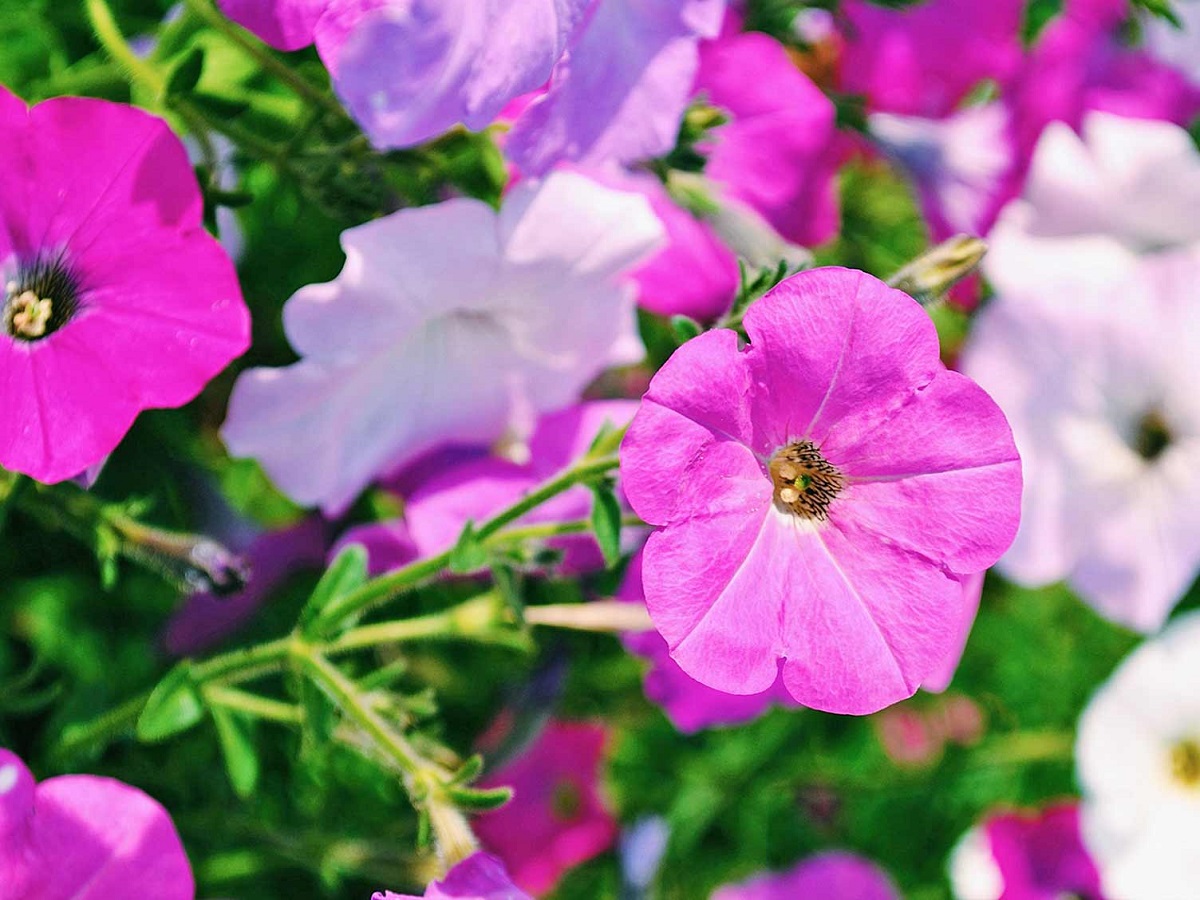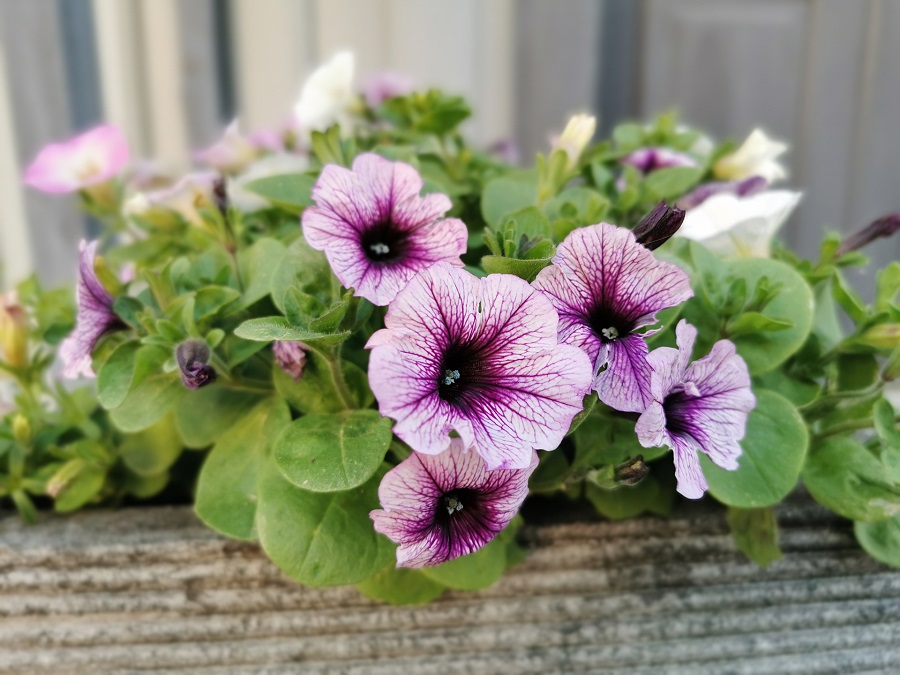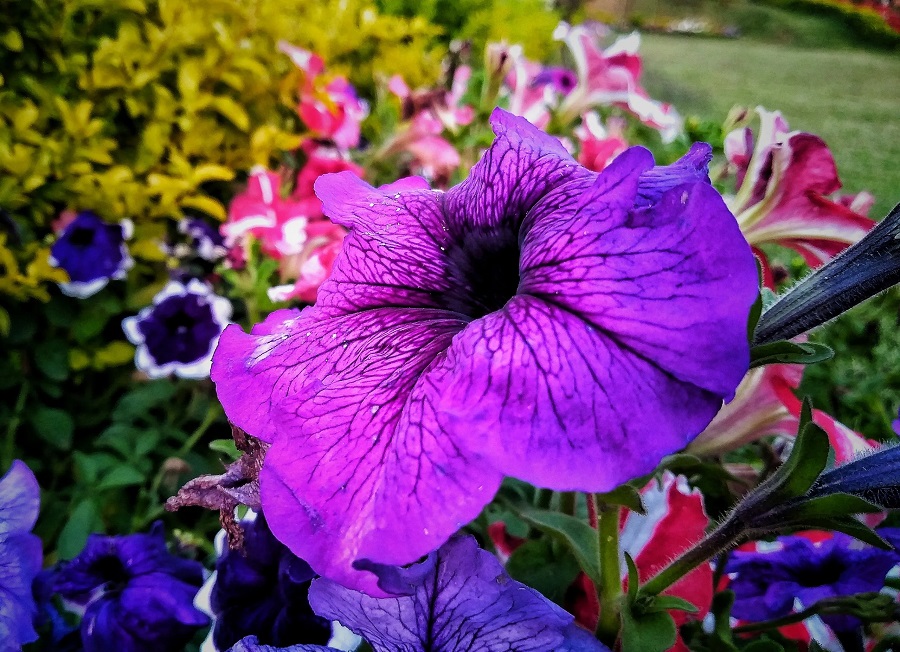Preciosa Planta de Petunia - Descubre Cómo Cuidar las Petunias
Las petunias se encuentran entre las plantas de jardín más hermosas. No sólo asombran por sus colores, sino también por su maravilloso olor, que no se puede ignorar. ¿Se pregunta si su jardín permite cultivar este tipo de plantas? Compruebe qué necesitan las petunias y cómo cuidarlas. Quizá puedan convertirse en la planta principal de sus parterres.

Petunia - ¿de dónde viene esta planta?
Las petunias son plantas solanáceas que incluyen muchas variedades. Se calcula que hay más de 30 tipos de petunias. La planta se da de forma natural en América del Sur, aunque es popular en todo el mundo y suele aparecer en parterres junto a las casas.
La petunia es característica entre otras plantas gracias a su olor increíblemente intenso. Por tanto, no sólo es una decoración perfecta para el jardín, sino que también enriquece el espacio con su aroma. Las hojas también son una característica destacada de la planta: si las mira de cerca, se dará cuenta de que son peludas.

¿Cuáles son los tipos populares de petunias?
Una de las variedades, la petunia de arrastre, también conocida como surfinia, es sin duda el tipo más popular de estas plantas. Los jardineros se encuentran a menudo con los nombres mencionados - es más, los términos petunia y surfinia se utilizan a menudo indistintamente, lo que no es del todo correcto.
Además de este tipo, existen muchas otras variedades dignas de mención. Entre ellas se encuentran los siguientes tipos de petunias:
- petunia altiplana
- petunia axillaris
- petunia exserta
- petunia inflata
- petunia occidentalis
- petunia riograndensis
- petunia scheideana
- petunia guarapuavensis
- Petunia integrifolia
- petunia bonjardinensis

¿Dónde colocar las petunias: al sol o a la sombra?
Una planta de petunia prefiere definitivamente los lugares soleados, pero el sol no debe ser directo, sino ligeramente disperso. Esto significa que puede plantar una planta un poco más alta en los alrededores que cubra ligeramente la petunia, pero que no bloquee demasiada luz.
Cuando elijas un lugar para las petunias, asegúrate de que el lugar no es vulnerable a los vientos fuertes. Es una planta vulnerable y las ráfagas intensas podrían dañar los tallos o las hojas.
Petunia - requisitos del suelo
La petunia es una planta relativamente resistente que puede crecer en diferentes condiciones. Pero su crecimiento es más eficaz si el suelo es fértil. Además, puede enriquecer el suelo con humus y asegurarse de que sea permeable. Como sugieren los expertos, el pH del suelo debe oscilar entre 5,6 y 6,5, lo que significa que tiene que ser ligeramente ácido.

¿Cómo regar las petunias?
La petunia se caracteriza por soportar el escaso riego y los periodos de sequía. Pero esto no significa que deba dejar que la planta se seque por completo. Si quieres que la planta desarrolle unas flores hermosas y ricas, riégala con regularidad y profusamente, pero no dejes que el agua se quede en el suelo. Regar la planta una vez al día es suficiente en la mayoría de los casos. Durante un período de crecimiento intenso, que se produce en verano, puede regar la petunia dos veces al día.
¿Necesitan las petunias ser alimentadas?
El cuidado de las petunias es un proceso que requiere alimentación. Hágalo con regularidad: una vez cada dos semanas. La planta debe reforzarse con mezclas especiales desde que se planta en el suelo hasta finales de otoño. Esto fomenta el crecimiento y la floración de la planta, pero también permite que la petunia eche raíces, lo cual es muy importante.
¿Cuáles son las mejores sustancias, en este caso? Utiliza productos de una tienda de jardinería: los diseñados para plantas de flor son probablemente los más beneficiosos. También puede enriquecer el suelo con abonos naturales como:
- estiércol,
- vermicompost,
- guano.

¿Son las petunias vulnerables a las enfermedades y las plagas?
Las petunias no son difíciles ni exigentes de cultivar. Por desgracia, su vulnerabilidad a diversas plagas y enfermedades es un problema. Si el suelo en el que crece una planta de petunia es de baja calidad y se riega en exceso, la planta suele desarrollar enfermedades fúngicas. El moho es una de ellas. Se presenta en forma de un residuo blanco en el suelo, que luego se extiende a la planta. Si no reaccionas rápidamente -utilizando productos químicos o eliminando las partes de la planta infectadas- la enfermedad podría extenderse a otras plantas que crezcan en el mismo parterre.
Otras enfermedades de las petunias son las siguientes:
- Pudrición seca,
- botrytis,
- clorosis,
- manchas marrones,
- pudrición marrón.
Además, las petunias pueden ser propensas a las plagas que suelen aparecer en las hojas. Los áfidos son los más peligrosos. También pueden aparecer diversos ácaros y moscas blancas.
Plántulas de petunia - precios
Los plantones de petunia son de los más baratos del mercado, por lo que puedes plantarlos fácilmente por todos los parterres de tu jardín. Una planta cuesta menos de 10 dólares. Si hace un pedido grande, puede esperar un descuento.

📍 ¿Qué aspecto tiene una petunia?
La petunia es una planta decorativa de baja estatura que suele cultivarse en los parterres de los jardines. Tiene flores que se asemejan a copas - tienen diferentes colores, dependiendo de la variedad. En verano, las petunias florecen maravillosamente, lo que las convierte en una perfecta decoración de jardín.
📍 ¿Cuándo plantar las semillas de petunia?
La plantación de las semillas de petunia suele hacerse en febrero. Las semillas se colocan en pequeñas macetas con turba y arena. Las plántulas pueden ponerse en el suelo en mayo, cuando no hay riesgo de heladas.
📍 ¿Dónde plantar petunias?
Las plantas de petunia adoran los lugares soleados: es ahí donde pueden desarrollarse plenamente. La protección contra el viento es un aspecto importante. Las ráfagas fuertes podrían dañar los tallos y las hojas.
📍 ¿Cómo regar una petunia?
La petunia necesita un riego frecuente: normalmente, todos los días. Durante un período de sequía en el verano, puede aumentar la frecuencia hasta dos veces al día.
Artículos destacados




